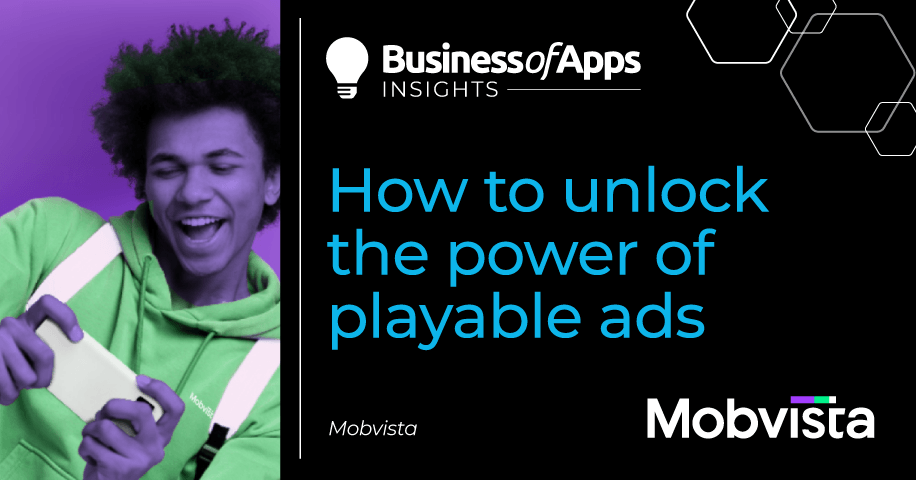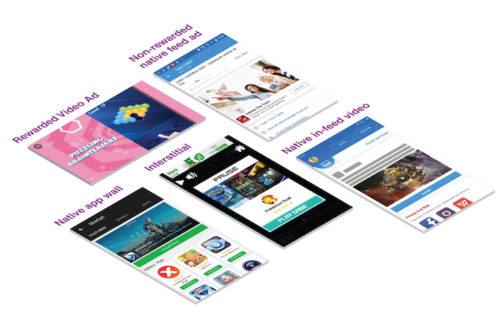The average mobile phone user has 80 apps on their phone and doesn’t use 62% of them. As such, they’re likely to be wary of impulse downloading an app, especially a game, without knowing if they’re truly going to use it.
Thankfully, app developers can provide potential users with playable ads, which let users trial core gameplay to decide if they want to download the featured game.
They are incredibly effective because of several converging trends. First, people like to try things out before committing to buying them. While many games are free-to-play, which means you don’t have to spend money upfront, users are mindful of app overload on their devices. Secondly, a well-done playable ad can break through ad fatigue and get someone more interested than a video.
Playable ads increase Installs per Impression Rate (IVR) by over 40% in mature markets such as Europe and the US and 85% on average in Japan and Korea, according to a 2021 Mintegral study. In addition, the day two retention rate of American and European users acquired via playable ads is 5%-9% higher than those who are converted by regular video ads.
Advertisers love it as well because it creates specific measures of attention. If someone is playing the ad, they’re engaged and learning about the game, even if they don’t ultimately download or buy it that day.
Users who engage with playable ads are more likely to install the app since they have already experienced a part of the gameplay. Playable ads generated 70% of all app installs, according to the Mintegral exchange.
So, if they’re extremely effective, why isn’t every advertiser using them? Historically, they’ve been challenging to create and update. Creating playable ads in the past required an actual individual to play the game while that gameplay was recorded. If the game developer wanted to show different variations of the same ad, that would require them to play and record each one separately.
That difficulty meant many advertisers ended up using the same gameplay over and over again, creating a different form of ad fatigue the ads were hoping to eliminate.
Even considering that reality required significant time to produce valuable playable ads, game developers and their agencies struggled beyond that. Another issue impacting playable ads is the overarching lack of experience in creating gameplay ads related to coding skills and production experience. They also have had difficulties with localization and multi-channel adaptation for games on different platforms and customized to different regions. Finally, some agencies tasked by developers needed more creativity or inspiration to understand which aspects of the game would be most impactful as a lead generation tool.
Time for a MarTech health check
Is your MarTech stack fueling growth or wasting budget? Spot the issues and fix them fast with this free guide from the experts at ConsultMyApp.
Download nowOf course, this revolves around the game developers and/or their agencies handling this work internally with rudimentary tools. Technology has advanced, so developers no longer need someone to play the games. Advertisers can no longer afford to stick to static playable creatives when in-housing with the right technology opens up a whole new world.
Benefits of investing more into playable ads
Speed and efficiency
The game developers themselves are likely the best arbiters of which aspects of the game to turn into playable ads. They likely have significant gameplay data to guide the decision-making process or know which moments will stop scrollers in their tracks, especially those watching ads to earn rewards for the games they’re playing. In-house teams now have the ability to drag-and-drop to build their playable ads quickly. The right technological solution can also provide pre-built templates that make producing playables even easier.
Lower production costs
Removing the time-consuming—and therefore costly—process of manually recording the gameplay means developers can now launch new playables at scale. They can test and learn which ones work and build different scenarios around the most popular gameplay options.
Simple variability
Nothing is more deflating than spending a lot of time on a playable ad only to see it fail to demonstrate its ROI. Unfortunately, developers without the time or expertise to make new ones have been stuck in the past with underperforming playables. That’s no longer necessary. Thanks to technological advances, developers can quickly identify the best scenarios versus going through and playing the entire game, including slight variations. It’s incredibly simple now to instantaneously create multiple scenarios of the same theme.
The ability to customize
Fans of the hyper-casual game On Ice! said “gameplay experience” was one of the primary reasons why they enjoyed the game. To grow the user base and increase conversions, the Mobvista team created a two-step advertising strategy that focused primarily on the core gameplay while simplifying other aspects of the game.
We created a simple, clean and clear playable focused on gameplay experience and further boosted downloads by working on ways to stimulate players’ competitive side, the urge to win by replacing the original “points system” with a “score system,” set the maximum score to 95/100, and paired it with creative copy designed to challenge and taunt players.
Finally, the ad endcard displayed various skin rewards along with a call to action, “Next Round,” to encourage taps and drive conversions. These changes helped increase IVR on Android and iOS by 77% and reduced cost per installation by 56%. Best of all, the new playable was responsible for 95% of all downloads, meaning the playable ads were cost-effective and the overwhelming source of installs.
While all of these sound like big challenges, the reality is they’re easily solved with the right approach. Companies that have either avoided playables or stuck with the same underperforming playable content because of the cost of changing it now have an excellent opportunity to lean into customizable and alternating playables to keep content fresh and potential customers engaged.











